|
By Graham K. Rogers
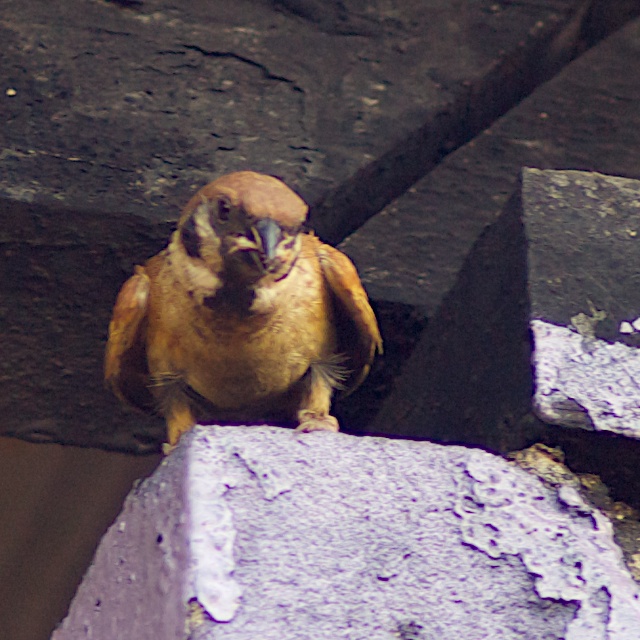
Every year, the department I work for takes its Senior Year students on a weekend trip to a dam. The students are all electrical engineers - power or communication - and part of the weekend is a chance for students to clear up any problems between themselves, and also with the teaching staff. There have been tears. There have been angry words.
The weekend usually focuses on one dam. Most of these in Thailand have accommodation, originally built for the construction. Putting up a group of students is easy. Some of the rooms are better than others: the Bhumibol Dam in Tak, for example, has been improved much over the years and makes a good place for an inexpensive vacation.
While we may be based at one dam, the trip could include others, as well as other installations run by the Electrical Generating Authority of Thailand, such as the Mae Moh plant that generates electricity using lignite. Acutely aware of earlier criticism of the pollution there, EGAT has made much effort to clean up, including much landscaping.
Part of the trip each year may also include a visit to an interesting temple or two and the obligatory shopping on the way home: gifts for friends and family. This year we were to visit Kanchanaburi, a province fairly close to Bangkok: famous for its railway and the way it was built in World War 2. Like many tourist centred places, there is much more to the province as I had discovered over the course of a few years when I used to ride my motorcycles out here.
Instead of one dam, the plan was to stay one night at the Srinakarin Dam near Tha Kradan (and the Erawan Waterfalls) on the Kwae Yai River and then another at the Vajiralongkorn Dam (formerly Khao Laem Dam) on the Kwae Noi, near Tongphapum. The start time was scheduled for 08:00.
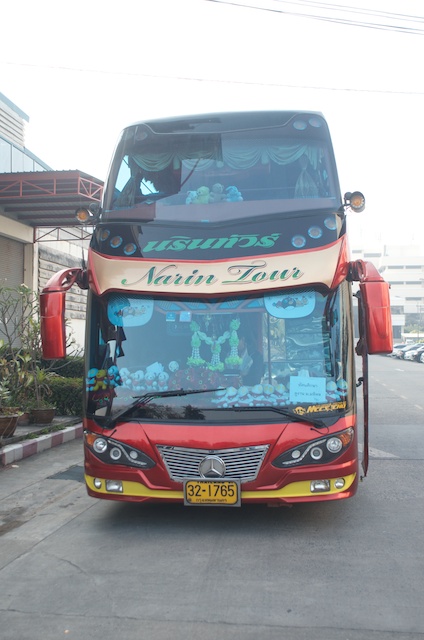 I should have known better. Not much starts on time in Thailand and these trips are no exception, but I always make the effort anyway. I arrived before the scheduled time and (bit by bit) students - and staff - trickled in. We left at 08:50, following Highway 340 towards Nakhon Pathom.
I should have known better. Not much starts on time in Thailand and these trips are no exception, but I always make the effort anyway. I arrived before the scheduled time and (bit by bit) students - and staff - trickled in. We left at 08:50, following Highway 340 towards Nakhon Pathom.
It was cold. The official temperature was shown as 15 degrees. Celsius. About 60 Fahrenheit: a good temperature for keeping wine. I felt cold and it was clear from the students' expressions that they felt it more. It is a joke round here that if the foreigner (farang) is feeling the cold, it really is cold. People die here from these low temperatures (as low as 4 deg in the North). More than 60 have died this year.
Already wearing a thick overshirt, I retrieved my leather jacket from my office. Last year at a dam in the north-east the mornings were particularly cold and I did not want a repeat of the discomfort this year.
The traffic on the highway is much heavier these days. We always use the same bus driver. He is particularly safe and reliable. Why take a gamble? He had a new bus this time which is a deep maroon, with the usual extra graphics. The windows were smaller making it less easy to take photographs. The point of a trip in Thailand is not to look out of the window and enjoy the view, so buses are equipped with drawn curtains, loudspeakers and TVs with video systems. The journey is not the point; it is arriving at the destination. I look out of the window.
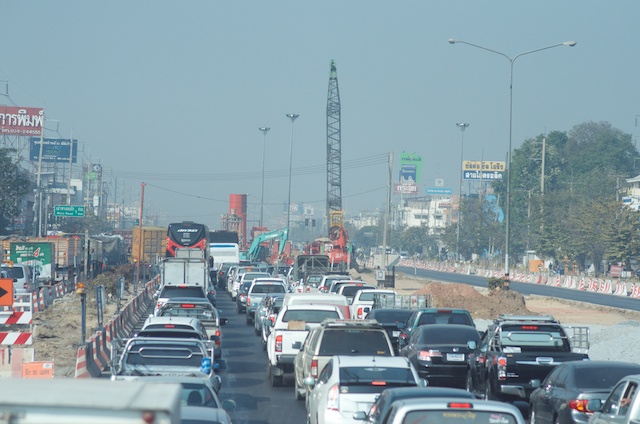
Major roadworks at Nakhon Pathom slowed progress for a while, but once cleared, the traffic thinned a little and speeds began to pick up as the light industry of Nakhon Pathom began to give way to more fields. The road reduced to 2 lanes at Nong Din Daeng where the road crosses a river. We stopped here for a break at a tidy PTT gas station. There were plenty of shops (the coffee was quite good) and the men's bathroom was spotless.
After the refuelling stop (for the students, not the bus), we were on the road again and soon turned off the southern highway onto the Kanchanaburi Road (AH 2). This was much quieter, although at weekends this can be really heavy. Since I last rode out here, there have been some improvements, including a long bridge that crosses a railway and an intersection. With the road/rail intersection, delays could be lengthy in the past. Two other intersections that I had remembered as slow were in the process of being improved. This caused slight delays, with the police using the delays to slow vehicles down even more.
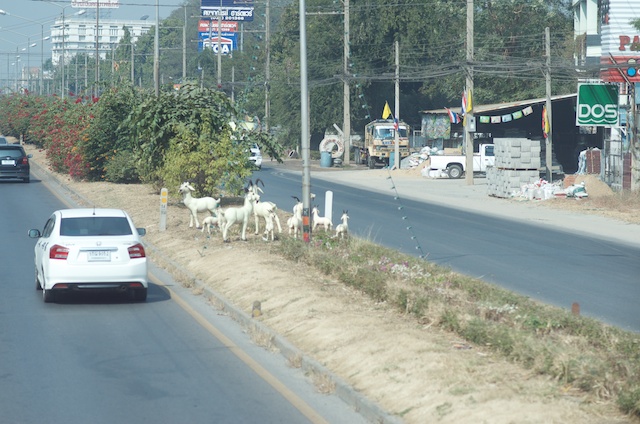
Near Ban Pong, I saw a group of concrete goats, which reminded me of the famous concrete cows of Milton Keynes. Further along were some mini concrete elephants, then some concrete donkeys. We passed a tour bus that displayed a Russian URL on the back, which seemed indicative of changing times.
A little before Tha Muang, the country changes slightly as we move from the Central Plains area. To the left and right are the first sights of hills: a sure sign that Kanchanburi is near. It is also an area where several sugar mills can be seen near the road. Convoys of trucks carrying the cut cane could be seen travelling in the opposite direction.
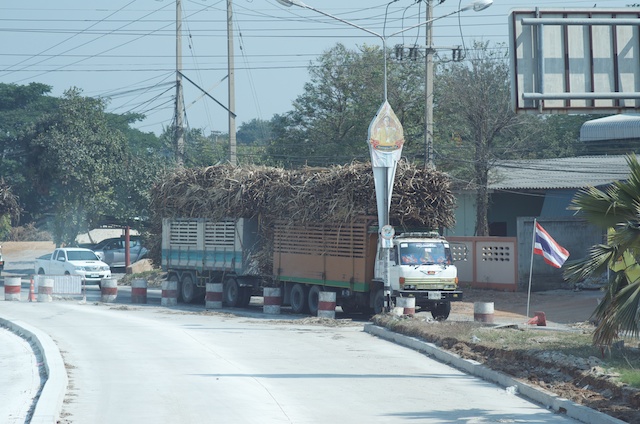
The 3G signal was unavailable for most of the journey once we had left the Bangkok area, but picked up a little near Kanchanaburi, even though the bus made a detour of the town. On this bypass road, there was more development with some major Bangkok retailers taking the US idea of building on the outskirts, but providing ample parking. Even midday, these were busy. West of Kanchanaburi the surroundings were much as I remembered them from a few years ago: mainly agricultural. There had been a couple of housing developments. One that had failed was adjacent to one that thrived.
At this time of year, it is dry and dusty, albeit cool. In a couple of months it will be hot, dry and dusty. Temperatures reach 40 degrees or more here as the province is far from the sea. The army has a big presence out here and there are several camps.
We passed a small dam on the Kwae Noi and the road began to become interesting. I remembered this as one of my favourite stretches with its twists and turns, plus a couple of sharp bends. This is a wonderful road for motorcycles, but hard work for a bus driver. Nearer the Erawan Waterfalls and the Srinakarin Dam, there had been some clearing of the sides of the roads for a number of new resorts and a few new restaurants. To the left, we could catch glimpses of the blue-green river through gaps in the trees.
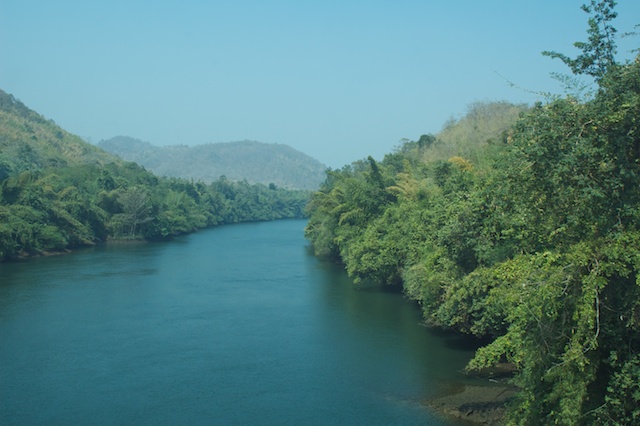
While the main road went up a hill towards Srisawat (another great bike ride) we took a turn to the left for the dam and the waterfall. The bus took the twisty road to the dam crest, but our secretary had missed telling him that we needed to visit the dam administration, some distance away.
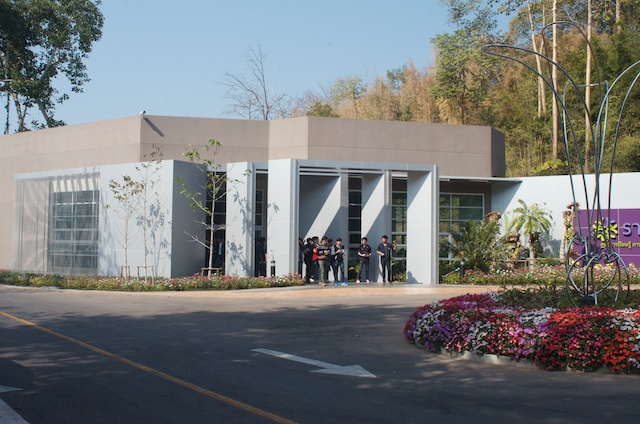
The area we eventually arrived at had the accommodation areas, admin and a restaurant. We ate first then made our way to a building used for meetings and public relations events. This new construction had been nicely designed with a couple of theatres for showing movies. A lady introduced the EGAT facility and we saw a movie on the dam. A second movie made much of the need for all to take care of the environment, with particular emphasis on preserving species.
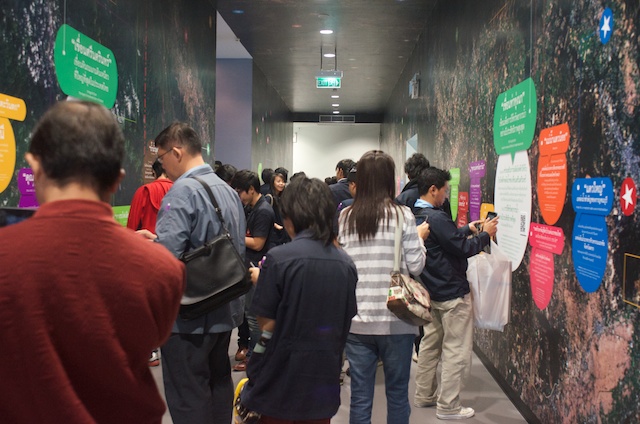
After the movies we walked through an impressive gallery that showed much information about the efforts EGAT was making. It was so unexpected and a lot of thought has gone into the presentation of the displays.
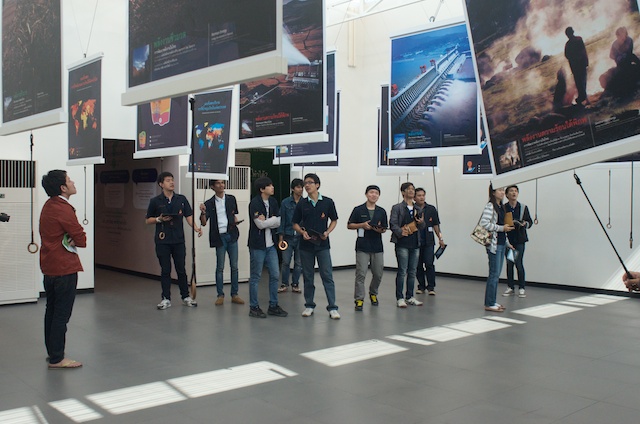
As part of the experience, students were given tablet computers with preinstalled movies and other data, activated by QR codes. The students were not sure, but thought the tablets had a version of Android installed. It was another well-thought out part of the whole presentation.
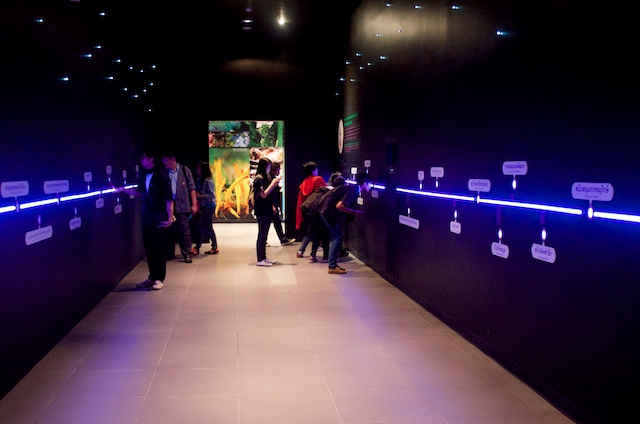
Before leaving there was another movie that was projected onto the back of a glass screen so that a symbolic table and chair were visible all the time. This movie outlined a Royal project for protection of plants that had begun to disappear. After, we were invited to take some seeds that we could grow ourselves.
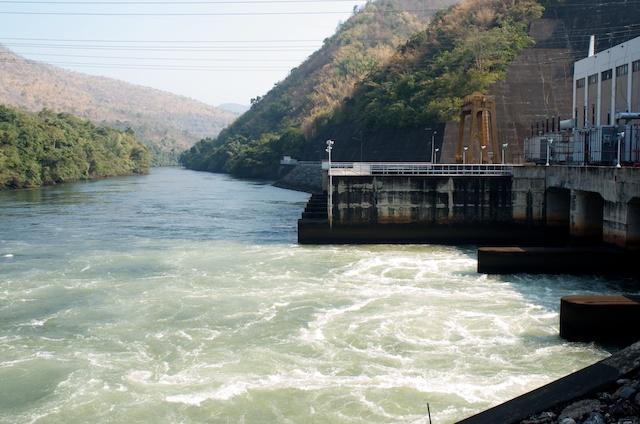
When this part of the PR work was done, our bus followed an EGAT car over the hills to the dam crest by another route and from there we went into the section where power is generated at the bottom of the huge pipes that feed the turbines.
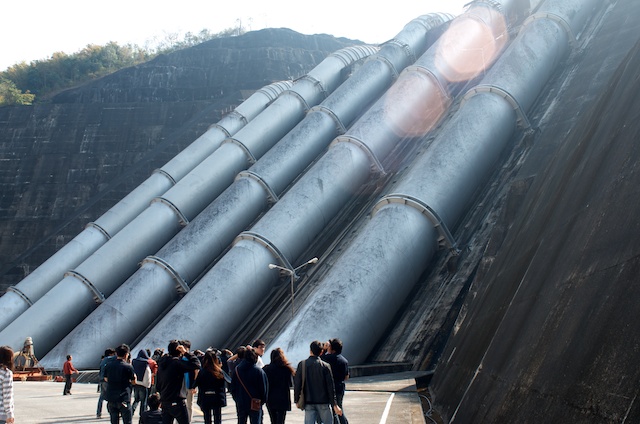
While not normally open to the public, I have visited such installations several times. I have only once been asked not to take photographs and that was due to some sensing equipment: they were concerned about flash; not that I ever use flash, but this was not something I was going to argue about.
This time, there were no such requests and we all took many pictures of the outside, the turbine installations and the control room. With around 40 students to deal with the staff were patient. An EGAT photographer was following us all afternoon and was taking as many images as we did.
It is difficult to describe the sheer scale of the machinery inside a dam. The five turbines here each have a massive shaft of solid steel, about 75 cms in diameter and several metres long. It spins quite fast as the water passes through the turbines several metres below us, beneath the concrete.
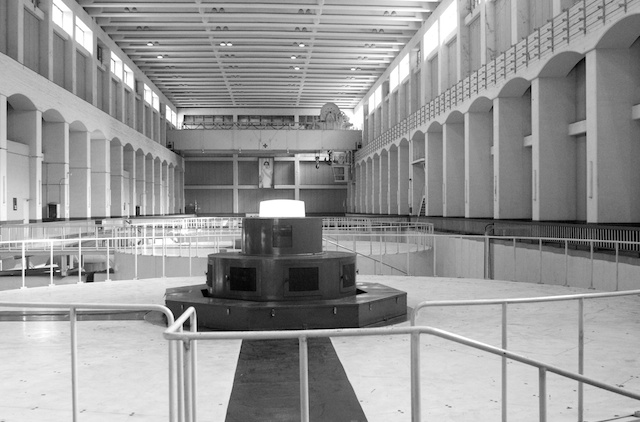
Outside the water released churns as it leaves the installation and takes a couple of hundred metres before the river settles into a normal flow.
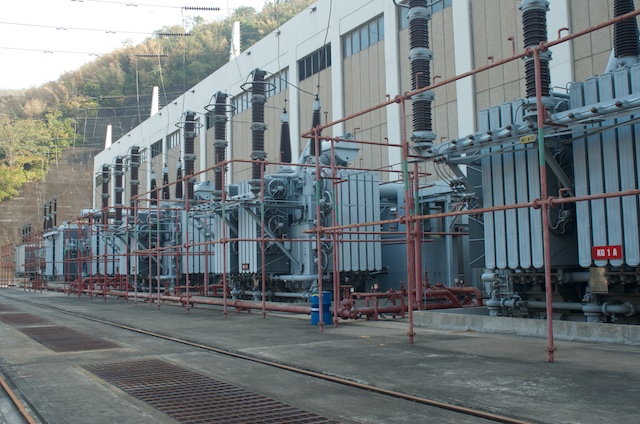
When group photographs were done, we headed back to the administration area. The secretary had already picked up keys for the rooms we were to use overnight. I was given a room by myself which I prefer. It leaves me free to work. The last time I shared a room, I almost attacked a colleague who came into the room in the small hours: my sleeping brain told me it was a break-in (I had had this happen at home).
I began to sort photographs in Aperture and out of the 400 or more I had taken, several were trashed immediately on the grounds of poor quality. I eventually selected just over 100 for the department page on Facebook, but reduced that a little more.
There was no Internet at the room, but walking to the restaurant area, where we were to eat later, I was able to connect and soon had the images uploaded with the fairly reasonable connection. Apart from this, I am restricted to EDGE. There is no 3G here at all (at least from my carrier). It was beginning to become cold again and all of us were feeling uncomfortable by the time we returned to our rooms.
Saturday is an early start as we have to go some way back towards Kanchanaburi, before going cross country to join the A2 and head towards the border with Myanmar. We will not got that far, but the trip to Tong Phapum is still a fair distance. The students have been told 08:30. We will leave at 09:00.
See also: A Weekend Away from IT: Visiting Dams with the Students (2) - Vajiralongkorn Dam and Home
Graham K. Rogers teaches at the Faculty of Engineering, Mahidol University in Thailand where he is also Assistant Dean. He wrote in the Bangkok Post, Database supplement on IT subjects. For the last seven years of Database he wrote a column on Apple and Macs.
|
















